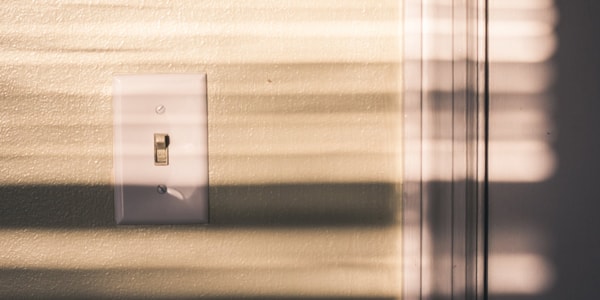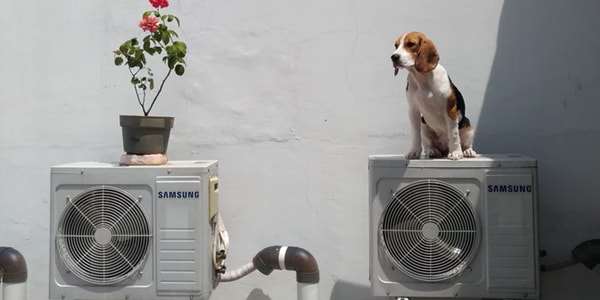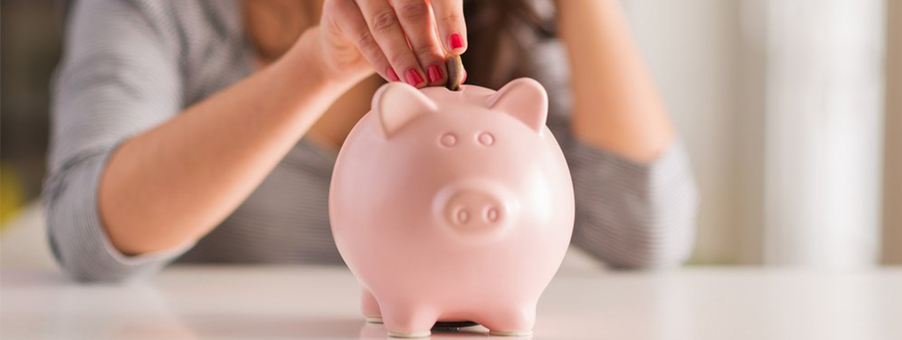A Newspoll survey conducted late last year showed many Australians plan to keep rising energy prices in check by closing curtains, washing clothes in cold water and taking shorter showers – but how much does any of that actually affect the average power bill? Apparently, quite a bit.
By matching the five most popular energy-saving strategies with some ballpark dollar savings based on the National Australian-Built Environment Rating System (NABERS), it was found the average tHicks Real Estatee-person household can save hundreds of dollars a year.
Put simply – simple changes can lead to big savings on your power bill.
Of course, all of this varies depending on which state you live in, how you use power, and exactly how you implement each strategy in your home. But whichever way you look at it, there are plenty of opportunities to reduce your utility bill with just a few behavioural changes.
1. Closing curtains/blinds: $55 p.a.
Windows are a home’s biggest sources of heat in summer (and cold in winter) so the 89 per cent of Newspoll respondents who plan to close blinds and curtains can expect to save around $55 this year according to the NSW Government’s Save Power website.
Effective window insulation includes:
– Shading windows and skylights during the day as much as possible
– Lined curtains and close-fitting Holland and/or Roman blinds instead of vertical blinds, conventional or timber Venetians
– External blinds or awnings on north, east and west windows
– Keeping doors and windows closed during the day as much as possible
– When the temperature drops at night, opening doors and windows up.
With window glazing, you can save even more. If the cost of double-glazing looks a bit steep, consider secondary glazing (fitting a membrane to the window) instead.
Heating or cooling the whole house can be expensive. Where possible, shut doors to areas you are not using and only heat or cool the rooms you spend the most time in.
Make sure your curtains or blinds seal your windows properly, and keep your curtains closed at night, and during the day when there is a heat-wave. Block draughts around doors and windows to stop air leaking out, or in.
Of course, it helps if you’ve got effective house insulation. Energy retailer AGL estimates efficient insulation can bring the temperature down by up to 7 degrees in summer, and increase it by 10 degrees in winter, slicing more than $100 off your power bill every year.
2. Washing clothes in cold water, drying on line/rack: $380 p.a.

AGL says that cold water has been ‘scientifically proven’ to be just as effective as hot water when it comes to washing clothes, and Save Power calculates the cost saving at $30 or more per year.
You can save another $30 per year if your machine is a front-loader with a 5-star energy rating.
But the real savings kick in when you cut back on clothes dryers. These energy thieves can use more power over the course of a year than a reasonably energy-efficient fridge, and cutting them out can save a whopping $350. Dry outside or on a rack instead – apart from being budget-friendly, it’s a whole lot kinder to your clothes too.
If you do need to use the dryer, AGL recommends setting it to warm rather than hot – it takes a little longer but uses less energy.
Bear in mind the cold water rule doesn’t apply to dishwashers – hot water is more efficient when it comes to dishes.
3. Being quick in and out of the fridge: $25 p.a.
Running your fridge efficiently can save about $25 per year. That means making sure it’s set to the right temperature (fridge at 4°C, freezer at -18°C), has decent sealing and is kept closed as much as possible.
Fridges use more power when they’re empty than when they’re full so if you’ve got a second fridge, turn it off and leave the door ajar when you don’t need it. Giving it a rest for six months of the year could take another $130 off your bill.
And if it’s time to upgrade, you’ll find an energy-efficient model pays itself off before long by reducing power bills by about $145 per year.
Your fridge is always on, making it one of your most expensive appliances. Make sure the door seal is tight and free from gaps so cold air can’t escape. An ideal fridge temperature is 4 or 5 degrees and an ideal freezer temperature is minus 15 to minus 18 degrees Celsius. If you have a second fridge or freezer, only turn it on when you need it.
4. Taking shorter showers: $105 p.a.
Shaving tHicks Real Estatee minutes off shower times can save a tHicks Real Estatee-person household about $105 a year – or much more if your house is still running an electric water heater.
“Electric water heaters account for around 25 per cent of a household’s energy use,” says Stephen Cranch from Solahart, an Australian solar water heater manufacturer.
“Switching to a solar water heater will reduce water heating energy consumption by 50-90 per cent,” he says – he says, and according to Save Power, reduce your annual power bill by about $150.
Plus, the Federal Government is planning to phase out electric water heaters from 2012, so rebates are also available for households needing to upgrade.
5. Switching appliances off at the power socket: $125 p.a.

It’s estimated that standby power contributes about 10 per cent of every power bill, so switching things off at the wall can save $125 or more a year.
And it’s not just computers and appliances. Even chargers use power when they’re not connected to our phones, iPads, razors and toothbrushes, and the digital clock on our microwaves can cost more to run than the cooking function itself.
6. Set your Air Con

In summer cooling can account for over 30% of your bill. Set your air conditioner between 24 and 27 degrees. Every degree above 24 can add 10% to your cooling bill. In winter, set your air conditioner to 21 degrees or above.
7. Turn heaters and coolers off when you don’t need them
Turn off when you leave the room, or go to bed. With some ducted heating systems you can turn off the heating in the rooms that are unoccupied. Make sure all your heating or cooling is turned off when you leave the house.
8. Insulate your roof
An insulated ceiling makes a big difference to your energy bills. If you already have insulation installed, check that it is properly installed and has the right rating (measured in ‘R-value’). In Victoria, insulation rated R3.5 or higher should be used for ceilings.
9. Save energy in the kitchen
Thaw frozen food in your fridge to reduce cooking time. When you are cooking, use the microwave when you can – it uses much less energy than an electric oven. If you use the stove, keep lids on your pots to reduce cooking time. Use the economy cycle on your dishwasher and only run it when it’s full.
10. Use energy-efficient light globes
Replace old incandescent and halogen light globes with energy-efficient globes. Energy-efficient globes save power and last longer. Light globes can sometimes be replaced for free or at reduced cost.
But awareness goes a long way. All up, you can reduce your bills by close to $700 without sacrificing comfort or refitting your home.
Source: www.smh.com.au, www.yonderr.com.au
House prices are on the rise. Find out the value of your property now.
Get a free online property report from Hicks Real Estate. It takes seconds.






